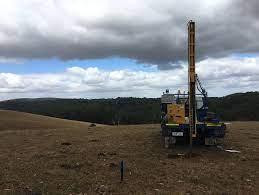How To Perform A Land Capability Assessment In Victoria?
Do I need a land capability assessment is it an important process for determining the suitability of land for a particular purpose? It is a critical step in the development of land in Victoria, Australia, and requires careful consideration of the physical, environmental, and economic factors that affect the land. This essay will discuss the steps involved in performing a what is a land capability assessment, including the identification of land characteristics, the evaluation of land suitability, and the implementation of appropriate management strategies.
Identification of Land Characteristics:
The first step in performing a cost of a land capability assessment in victoria is to identify the characteristics of the land. This includes evaluating the physical features of the land such as soil type, topography, climate, and vegetation. It also involves assessing the environmental conditions such as water availability, air quality, and potential for contamination. Finally, it requires an analysis of the economic factors such as access to markets, infrastructure, and potential for development.
Evaluation of Land Suitability:
Once the characteristics of the land have been identified, the next step is to evaluate its suitability for a particular purpose. This involves assessing the potential for agricultural production, forestry operations, or other activities. It also requires an analysis of the potential impacts on the environment and local communities. The evaluation should consider both short-term and long-term impacts and should be based on scientific data and expert opinion.
Implementation of Management Strategies:
Once the land has been evaluated for suitability, the next step is to implement appropriate management strategies. This includes developing plans for sustainable use of the land, such as conservation plans or agricultural production plans. It also involves developing regulations and policies to ensure that the land is used in an environmentally responsible manner. Finally, it requires monitoring and enforcement of these regulations and policies to ensure that they are followed.
Consideration of Social Impacts:
In addition to evaluating the physical and environmental characteristics of the land, it is also important to consider the social impacts of development. This includes assessing the potential impacts on local communities and Indigenous peoples. It also requires an analysis of the potential economic benefits and costs associated with development. Finally, it involves considering any cultural or spiritual values associated with the land.
Assessment of Risk:
The final step in performing a council land capability assessment is to assess the risks associated with development. This includes evaluating the potential for environmental damage or disruption to local communities. It also requires an analysis of the potential economic risks associated with development. Finally, it involves considering any legal or regulatory risks associated with development.
Conclusion:
Performing a land capability assessment in Victoria requires careful consideration of a variety of factors. This includes identifying the physical and environmental characteristics of the land, evaluating its suitability for a particular purpose, implementing appropriate management strategies, considering social impacts, and assessing risk. By following these steps, it is possible to ensure that any development is done in an environmentally responsible manner that benefits both local communities and Indigenous peoples.


Comments
Post a Comment